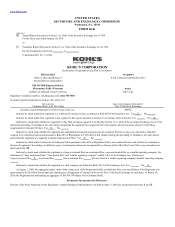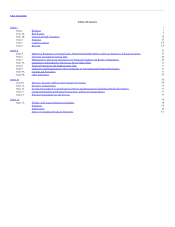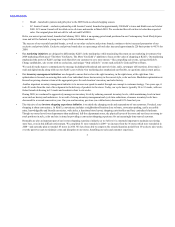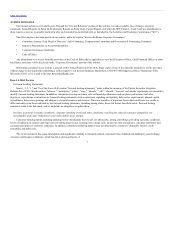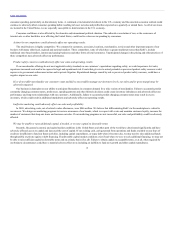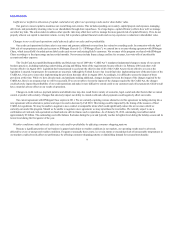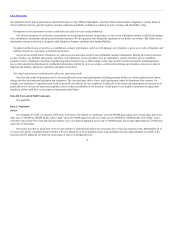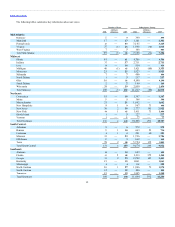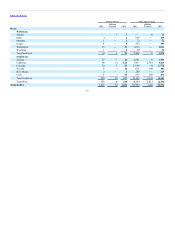Kohl's 2009 Annual Report Download - page 11
Download and view the complete annual report
Please find page 11 of the 2009 Kohl's annual report below. You can navigate through the pages in the report by either clicking on the pages listed below, or by using the keyword search tool below to find specific information within the annual report.
Table of Contents
the reputations of our private and exclusive label brand names or any affiliated individuals, could arise from product failures, litigation or various forms of
adverse publicity and may generate negative customer sentiment, potentially resulting in a reduction in sales, earnings, and shareholder value.
Disruptions in our information systems could adversely affect our sales and profitability.
The efficient operation of our business is dependent on our information systems. In particular, we rely on our information systems to effectively manage
sales, distribution, merchandise planning and allocation functions. We also generate sales though the operations of our Kohls.com website. The failure of our
information systems to perform as designed could disrupt our business and harm sales and profitability.
Unauthorized disclosure of sensitive or confidential customer information could severely damage our reputation, expose us to risks of litigation and
liability, disrupt our operations and harm our business.
As part of our normal course of business, we collect, process and retain sensitive and confidential customer information. Despite the security measures
we have in place, our facilities and systems, and those of our third party service providers, may be vulnerable to security breaches, acts of vandalism,
computer viruses, misplaced or lost data, programming and/or human errors, or other similar events. Any security breach involving the misappropriation,
loss or other unauthorized disclosure of confidential information, whether by us or our vendors, could severely damage our reputation, expose us to risks of
litigation and liability, disrupt our operations and harm our business.
New legal requirements could adversely affect our operating results.
Our sales and results of operations may be adversely affected by new legal requirements, including proposed health care reform legislation and climate
change and other environmental legislation and regulations. The costs and other effects of new legal requirements cannot be determined with certainty. For
example, new legislation or regulations may result in increased costs directly for our compliance or indirectly to the extent such requirements increase prices of
goods and services because of increased compliance costs or reduced availability of raw materials. At this point, we are unable to determine the impact that
healthcare reform could have on our employer-sponsored medical plans.
Not applicable
As of January 30, 2010, we operated 1,058 stores in 49 states. Our typical, or “prototype,” store has 88,000 gross square feet of retail space and serves
trade areas of 150,000 to 200,000 people. Most “small” stores are 68,000 square feet and serve trade areas of 100,000 to 150,000 people. Our “urban” stores,
currently located in the New York and Chicago markets, serve very densely populated areas of up to 500,000 people and average approximately 125,000 gross
square feet of retail space.
Our typical lease has an initial term of 20-25 years and two to eight renewal options for consecutive five or ten-year extension terms. Substantially all of
our leases provide for a minimum annual rent that is fixed or adjusts to set levels during the lease term, including renewals. Approximately one-fourth of the
leases provide for additional rent based on a percentage of sales over designated levels.
11

